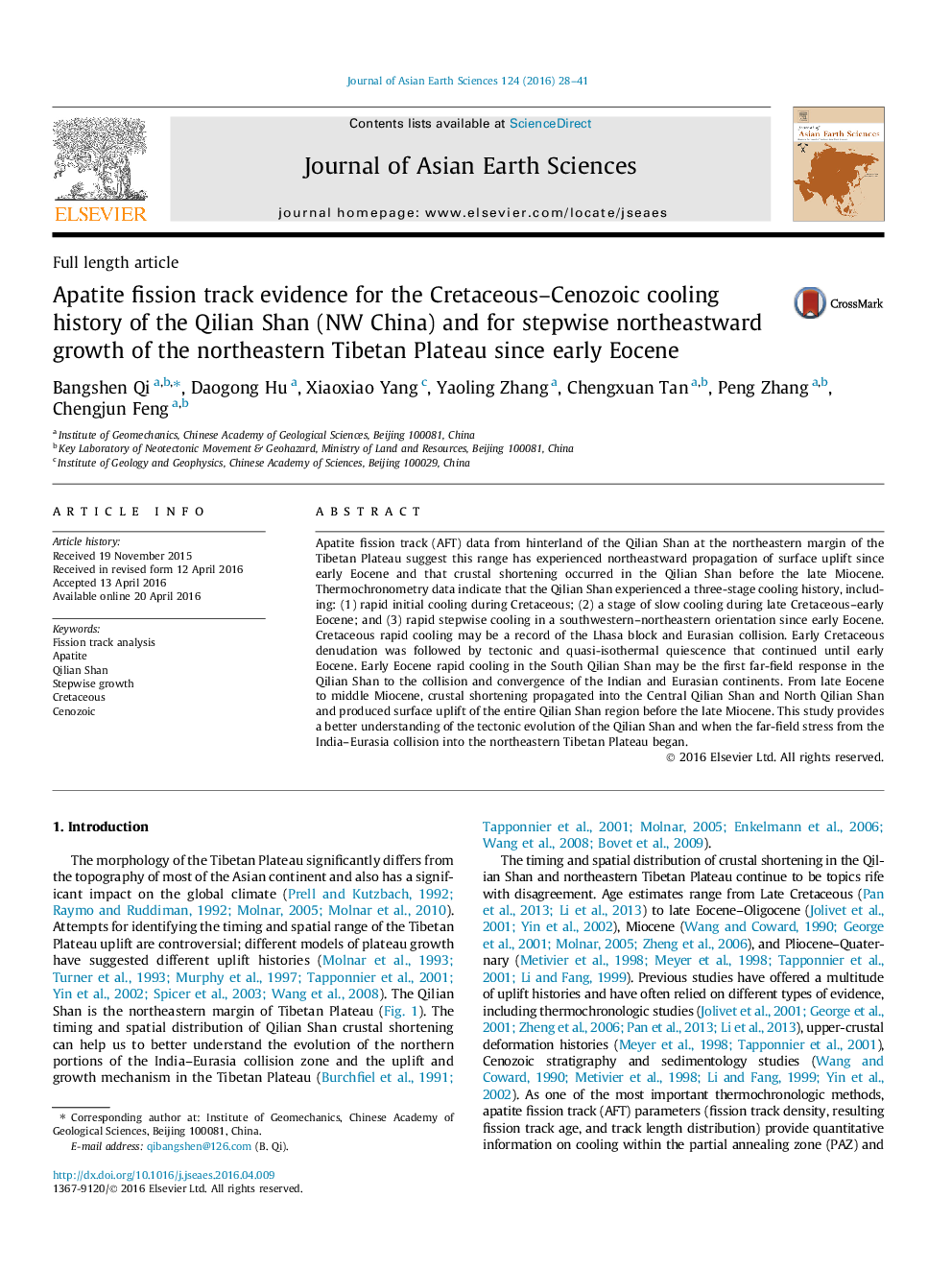| کد مقاله | کد نشریه | سال انتشار | مقاله انگلیسی | نسخه تمام متن |
|---|---|---|---|---|
| 4729975 | 1640347 | 2016 | 14 صفحه PDF | دانلود رایگان |

• AFT data from the Qilian Shan indicate stepwise northeastward growth of the northeastern Tibetan Plateau since the early Eocene, corresponding to India–Eurasia collision.
• Rapid cooling during Cretaceous corresponds to the collision of the Lhasa block with the Eurasian.
• Rapid cooling since early Eocene in the South Qilian Shan corresponds to India–Eurasia collision.
• The study results shed light on the tectonic evolution of the Qilian Shan.
Apatite fission track (AFT) data from hinterland of the Qilian Shan at the northeastern margin of the Tibetan Plateau suggest this range has experienced northeastward propagation of surface uplift since early Eocene and that crustal shortening occurred in the Qilian Shan before the late Miocene. Thermochronometry data indicate that the Qilian Shan experienced a three-stage cooling history, including: (1) rapid initial cooling during Cretaceous; (2) a stage of slow cooling during late Cretaceous–early Eocene; and (3) rapid stepwise cooling in a southwestern–northeastern orientation since early Eocene. Cretaceous rapid cooling may be a record of the Lhasa block and Eurasian collision. Early Cretaceous denudation was followed by tectonic and quasi-isothermal quiescence that continued until early Eocene. Early Eocene rapid cooling in the South Qilian Shan may be the first far-field response in the Qilian Shan to the collision and convergence of the Indian and Eurasian continents. From late Eocene to middle Miocene, crustal shortening propagated into the Central Qilian Shan and North Qilian Shan and produced surface uplift of the entire Qilian Shan region before the late Miocene. This study provides a better understanding of the tectonic evolution of the Qilian Shan and when the far-field stress from the India–Eurasia collision into the northeastern Tibetan Plateau began.
Journal: Journal of Asian Earth Sciences - Volume 124, 1 July 2016, Pages 28–41